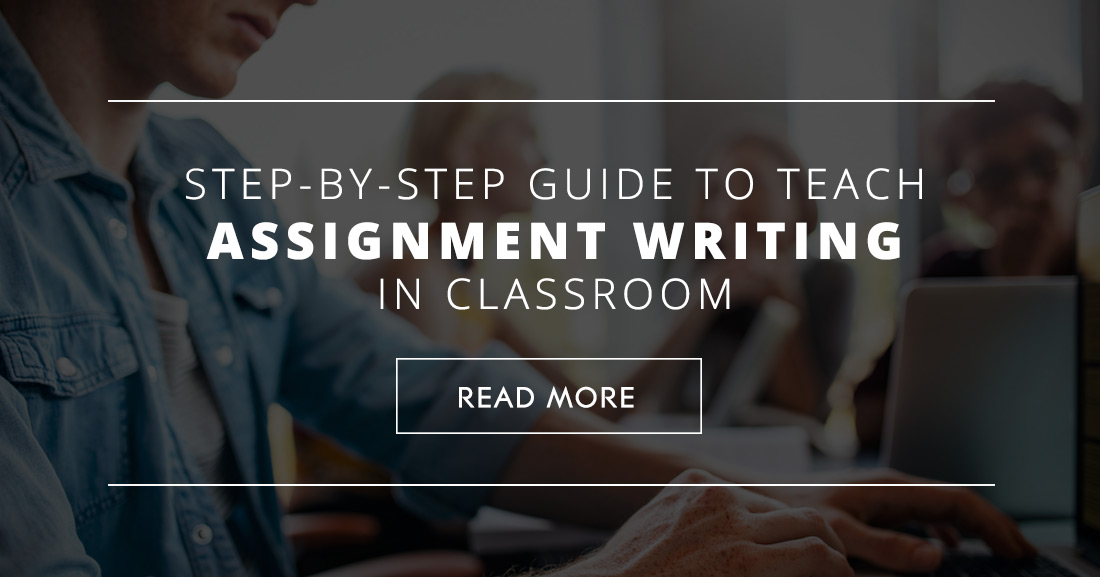How to Teach Your Students to Write an Essay


Teaching writing to a classroom of green scribes is a stressful undertaking indeed – in fact, after my first failed attempt during my inaugural teaching year, I was tempted to cut this entirely from the lesson plan. But, of course, reality set in, and I realized I either had to deal with this same difficulty and stress year after year until my retirement – which is still so far away! - or, I'd have to figure out a way to make this work.
What I didn't realize, at that time, was that this was not only upsetting for me being unable to convey this lesson to my students, but my students felt equally as upset that they were unable to properly understand these lessons.
I had to find a strategy that would make me want to wake up in the morning and get the teaching started – but, would also make my students feel inspired and fulfilled. Teaching, of course, is all about the students, so making them want to learn and be able to comprehend was at the forefront of my mind. But, at the same time, having a teacher that actually enjoys teaching is a part of that inspirational learning process.
Writing can come easy to some, but really isn't that easy for most. And, what may seem absolutely straightforward to myself, as a teacher, may not be so obvious to a student. But, there are so many resources available to help turn these complex ideas into common sense for your students. Hosting a library workshop dealing in source evaluation is a great addition to the classroom lesson plan. Also, there are all sorts of online resources to turn to. A library of resources is available through Academized, where students can access information on everything from plagiarism to grammar.
It's easier to understand an abstract concept when you've got concrete examples to look to. You can define the components of an essay, but it's much easier to grasp with an actual example. The main argument of an essay, the thesis, for example, is a stumbling block for many students learning to write. Simply saying that the thesis, "Americans should avoid eating fast food, because it's unhealthy," is a great example of a bad thesis – but it's helpful for students to see, because I can then explain to them why it's bad and show them an alternate that's much better. After showing them this, I can then say a better thesis would be, "Regular consumption of fast foods should be avoided, because it can lead to preventable diseases, increased health issues and medical costs." When they're able to see examples side-by-side, it's easier to understand what makes each one good or bad.
I can teach assignment writing with confidence, because I know the things I'm saying actually work. And, I know they work because I use them myself to write. Letting your students in on the process and writing techniques you use is a helpful way to show them that these things are useful. I tell them all of the questions I have to ask myself before I start writing – who my audience is, what my argument is, and what I'm going to use to prove that argument. I'll also go through some on the techniques I use, from free writing to mapping out my essay. A great start to get some of the questions they should be asking themselves is this guide for Tips on Writing Assignments. I also want to instill in them the importance of revising and proofreading my work. When I've been staring at the same assignment for too long, I know it's unlikely that I'll catch mistakes in it, so I always send it out to a professional proofreading tools such as Ukwritings or EssayRoo.
Sending a student off with a major assignment, then not seeing anything until the final product is ready, may be setting your students up for failure from the get-go. Especially if they are just learning and unsure of their work, they'll need help along the way. I like to set up milestones for them to reach, as they work towards their final product. It also helps them avoid procrastination, then scrambling to finish their assignment last minute – which is always a recipe for disaster. To start with, I typically ask for a layout of their essay – a simple breakdown of what they want it to look like. I always ask that their complete thesis statement be a part of this. Penn Libraries offers a great resource to help students understand how to create successful research skills, including help on breaking down the assignment into more manageable components. The breakdown can also include the list of resources they plan on using, all properly cited, of course. If they need some help with putting together their citations properly, Cite It In or Boomessays are helpful resources. But, when it comes down to it, you can't get to where you're going if you don't know how you'll get there. With the Assignment Survival Kit, you can plug in your due date and it will break down all of the milestones for you, with deadlines for each one.
What I've found over the years is that when students work hard, only to receive a bad grade, it can really put a damper on their enthusiasm and drive to learn and improve. But, when they're able to get feedback that they can apply to assignments going forward, and they see themselves improving, it can completely turn their educational experience upside-down and give them the drive to keep doing better. Designing assignments that allow them to receive feedback is such a helpful way to let them see exactly where there's room for improvements – and exactly where they did things perfectly! If they don't want to wait, they can get a piece of advice from this Assignment Help, guide that will help edit and make helpful suggestions for how to improve their writing.
I never get my best work done on the first try, so it's unreasonable for me to expect it from my students. But, when they're able to hand in a first draft, knowing they have the opportunity to get feedback, make changes and improve their overall work, it gives them the chance to learn from their mistakes. Not only that, but asking them to hand in a first draft gets them actually working on the assignment, instead of putting it off. With Easy Word Count, they can ensure that their word count is up to par with what you've asked for.
There are actually striking differences in the ways that argumentative essays are constructed between different cultures. It's common for Japanese writers to show both sides of an argument, while those who speak English as a second language are more likely to focus on historical components and less on their own argument. Understanding these differences can point to the differences between your students and can help you refocus their writing to what you're asking for. When different languages and cultures are involved, there can be some confusion when it comes to assignment style. This Guide to Harvard details the Harvard style its various elements.
There are certain things that each writer can do that will either contribute to his success or failure at the craft. Successful, skilled writers care about their writing and are committed to it. They recognize the needs of their audience and adapt their writing to those needs. In short, they put their heart and soul into each part of the writing process, and in the end, they have a better product to show for it.
They've got to get engaged, interested and motivated to want to learn and develop their skills. It did take me some time to realize that it wasn't like teaching any other subject. And, once I understood that, it made the entire experience so much more rewarding for myself and for my students.